Corn snakes are among the most popular pet reptiles in the world, beloved for their docile temperament, manageable size, and striking appearance. Native to the southeastern United States, these colorful constrictors have captivated the interest of both novice and experienced reptile enthusiasts. While many people are familiar with the basics of corn snakes, these fascinating creatures harbor numerous surprising secrets and characteristics that often go unnoticed. From their impressive problem-solving abilities to their wild survival tactics, corn snakes are far more complex and interesting than their reputation as “beginner pet snakes” might suggest. Let’s slither into some fascinating corn snake facts that might just change how you view these remarkable reptiles.
The Name “Corn Snake” Has Agricultural Origins
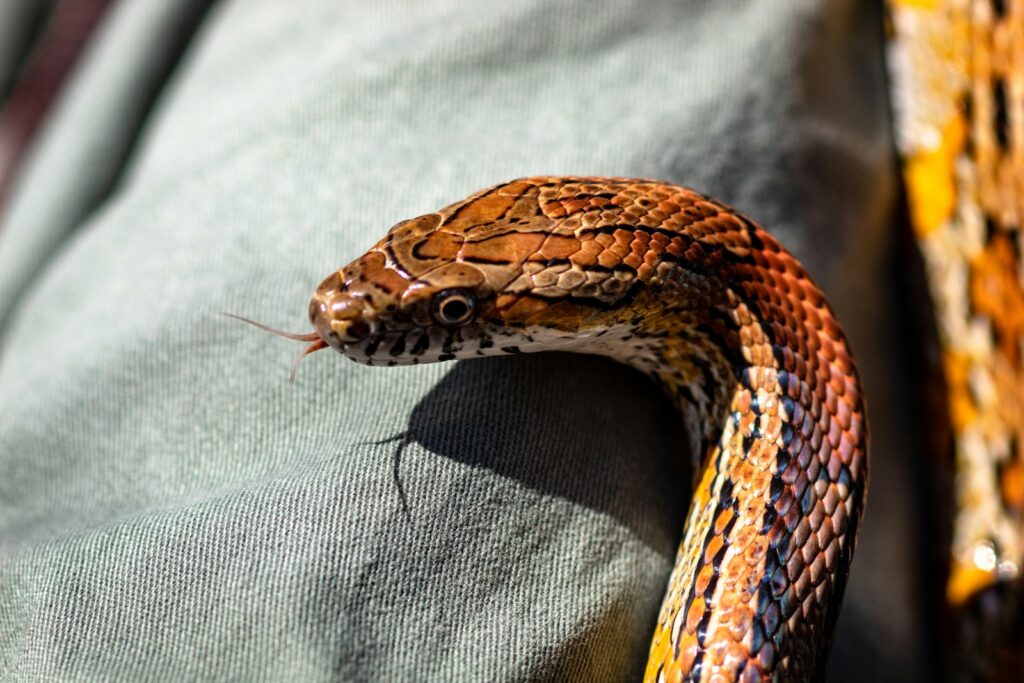
Contrary to what some might assume, corn snakes aren’t named for their color pattern (though some varieties do sport a yellowish hue). Instead, they earned their common name from their frequent presence around corn storage facilities and granaries in agricultural areas. Farmers would often spot these snakes hunting rodents among stored corn, making them valuable allies in pest control. Their scientific name, Pantherophis guttatus, derives from Latin words meaning “panther-like spotted snake,” which accurately describes their distinctive pattern. This agricultural connection highlights the historical relationship between humans and corn snakes as beneficial neighbors rather than threatening pests. Even today, rural residents often appreciate finding corn snakes on their property as natural rodent control.
They Are Master Escape Artists
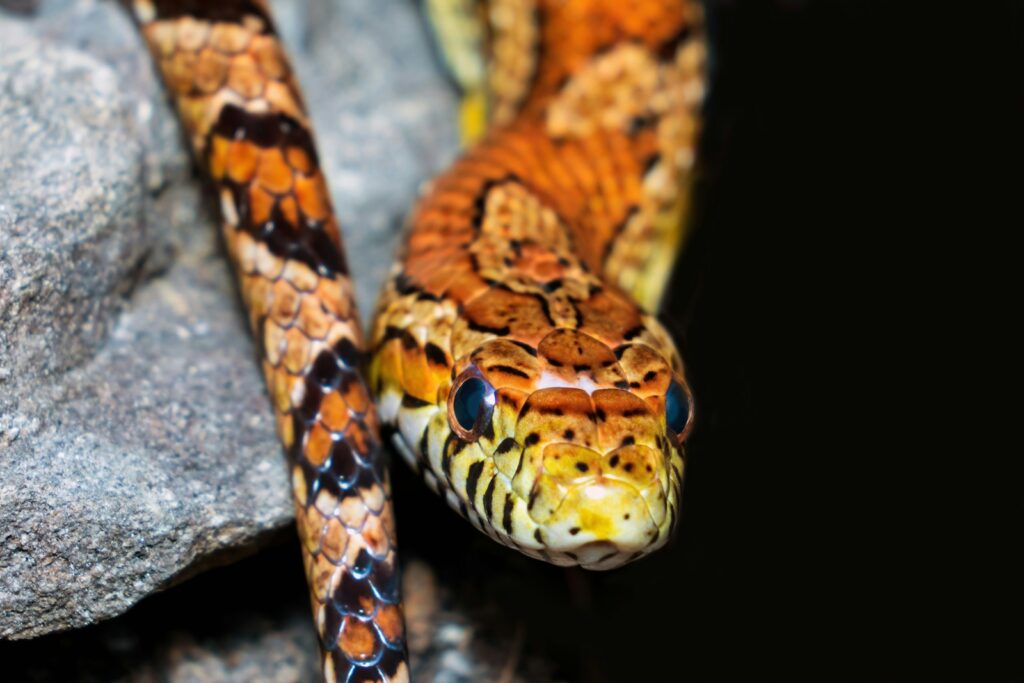
Corn snakes possess remarkable problem-solving abilities and physical flexibility that make them notorious escape artists among reptile keepers. Their muscular bodies can compress to fit through gaps as narrow as a quarter of their body width, allowing them to exploit tiny openings in enclosure lids or doors. Additionally, corn snakes can leverage their body strength to push against loose-fitting lids and climb vertical surfaces with surprising agility. Their inquisitive nature drives them to persistently test boundaries and investigate potential escape routes. These abilities stem from their evolutionary adaptation as active hunters that need to access small spaces to pursue prey and avoid predators, making secure enclosures with proper locks absolutely essential for corn snake owners.
They Can Live Over 20 Years in Captivity
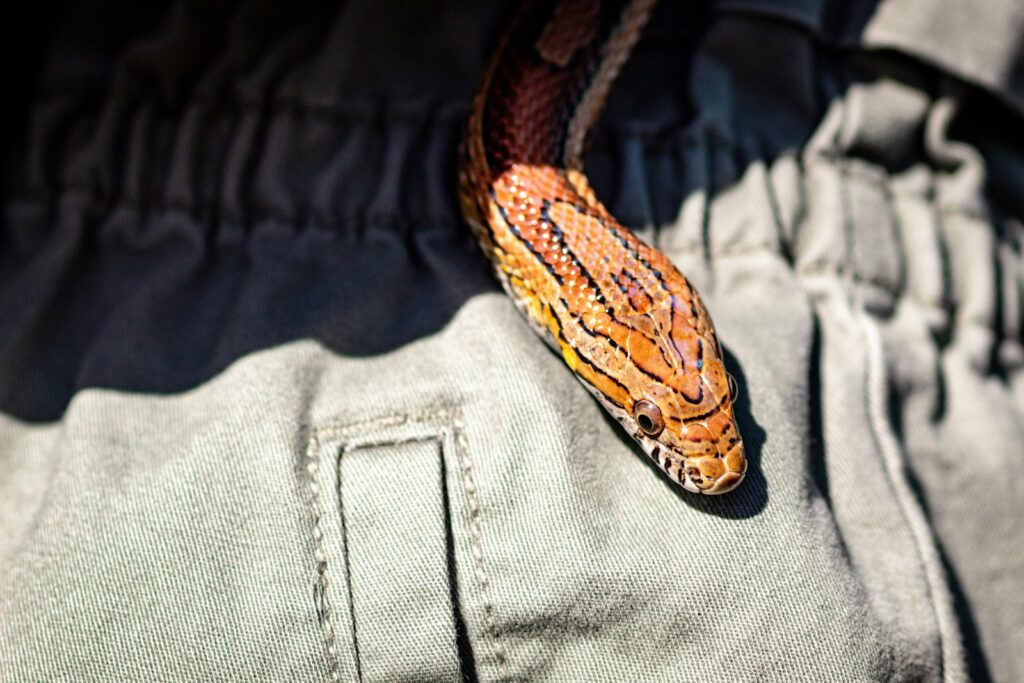
While many people adopt corn snakes without realizing the extent of their commitment, these reptiles can be remarkably long-lived companions. In optimal captive conditions with proper nutrition, habitat, and veterinary care, corn snakes regularly reach 15-20 years of age, with some exceptional individuals living into their mid-20s. This impressive lifespan exceeds that of most common household pets like hamsters or guinea pigs by a significant margin. Their longevity in captivity far surpasses their wild counterparts, who typically live 6-8 years due to predation, disease, and environmental challenges. This substantial lifespan means adopting a corn snake represents a long-term commitment, potentially accompanying their owner through multiple life stages and transitions.
They’re Expert Climbers Despite Lacking Limbs
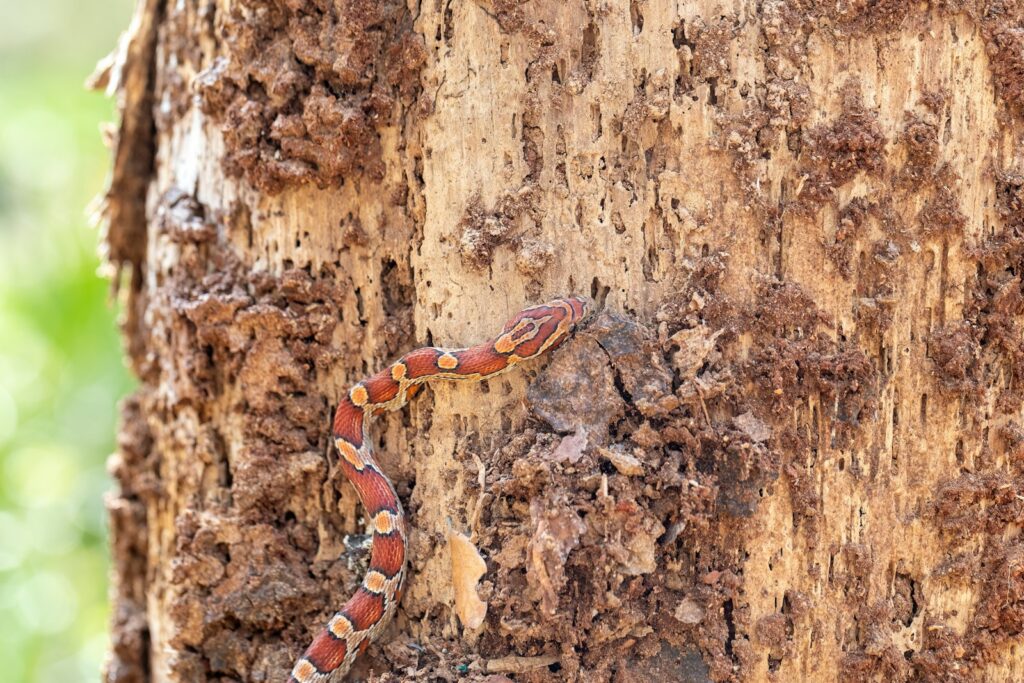
Despite having no limbs, corn snakes are surprisingly adept climbers who regularly ascend trees, shrubs, and structures in their natural habitat. They achieve this remarkable feat through a combination of specialized muscle control, scale structure, and body movement patterns that create friction against surfaces. Wild corn snakes frequently climb to raid bird nests for eggs and nestlings, access higher hunting grounds, or escape ground-based predators. Their climbing ability is so developed that they can navigate branches thinner than their own bodies and even scale relatively smooth vertical surfaces like wooden fence posts. In captivity, corn snakes benefit significantly from vertical enrichment like branches, cork bark, and climbing structures that allow them to express this natural behavior and utilize the full dimensions of their enclosure.
They Change Color Throughout Their Lives
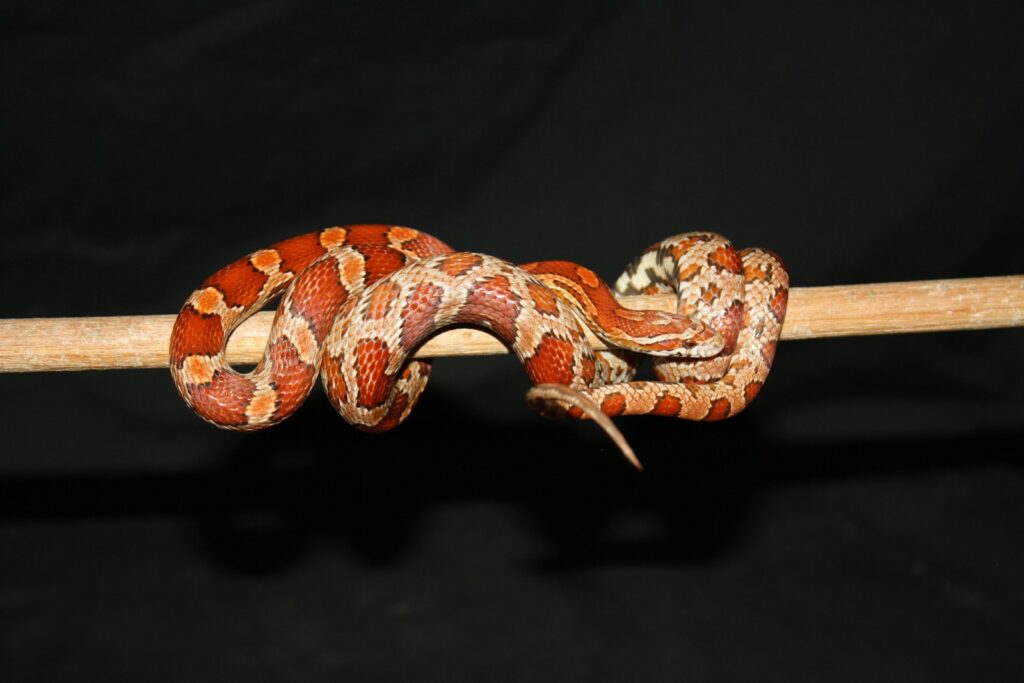
Corn snakes undergo a remarkable transformation in coloration and pattern intensity as they mature from hatchlings to adults. Newborn corn snakes typically display muted, grayish-brown coloration with subdued patterns that provide excellent camouflage against forest floor detritus and bark. As they grow and shed their skin, their colors gradually intensify with each molt, developing into the vibrant oranges, reds, or yellows characteristic of adult specimens. This color transformation serves survival purposes, as juvenile snakes face different predatory threats and occupy slightly different ecological niches than adults. The change is particularly dramatic in certain morphs, where babies may look entirely different from their adult forms. Even in fully mature specimens, corn snakes may continue subtle color shifts throughout their lives, with some older individuals developing deeper or richer hues with age.
They Have No External Ears Yet Can Sense Vibrations
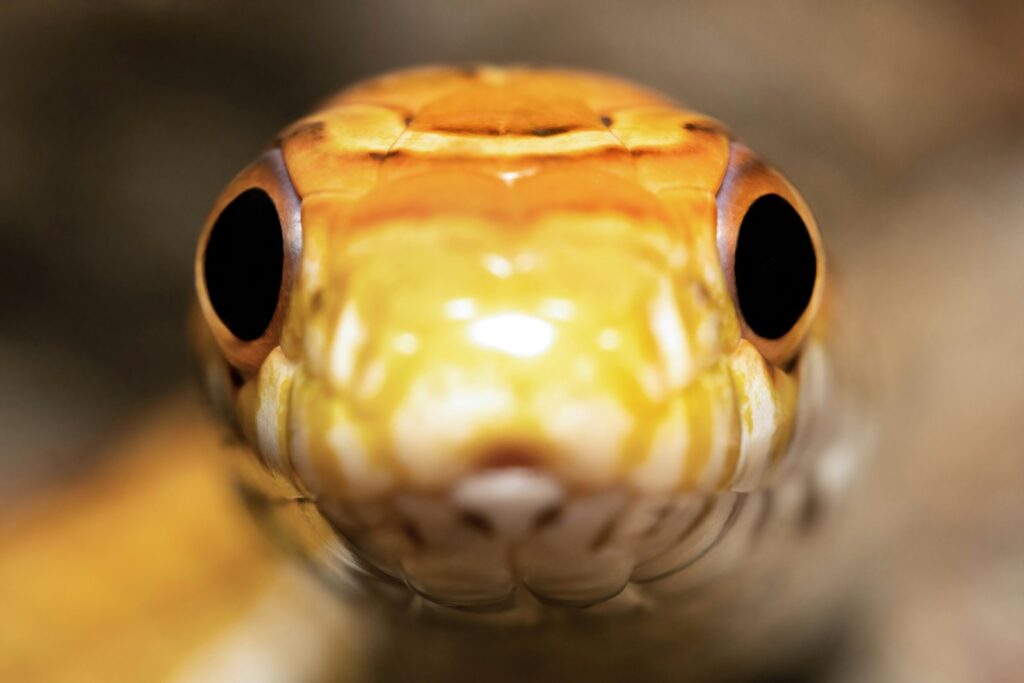
Corn snakes lack external ear openings and middle ear structures, yet they’re far from deaf to the world around them. Instead of conventional hearing, they rely on an intricate system of vibration detection through their jawbones and internal ear structures. When vibrations travel through the ground or air, they’re transmitted through the snake’s skull to their inner ear, which contains sensory cells that interpret these signals. This specialized sensory system allows corn snakes to detect approaching predators, locate prey movements, and sense environmental changes from significant distances. Though they can’t hear airborne sounds in the traditional sense, their vibration sensitivity is so acute that they can detect a mouse moving across a room or a person’s footsteps from several feet away. This adaptation explains why corn snakes may become alert or defensive when sensing heavy footsteps, even if they can’t see what’s approaching.
They Display Complex Courtship Behaviors
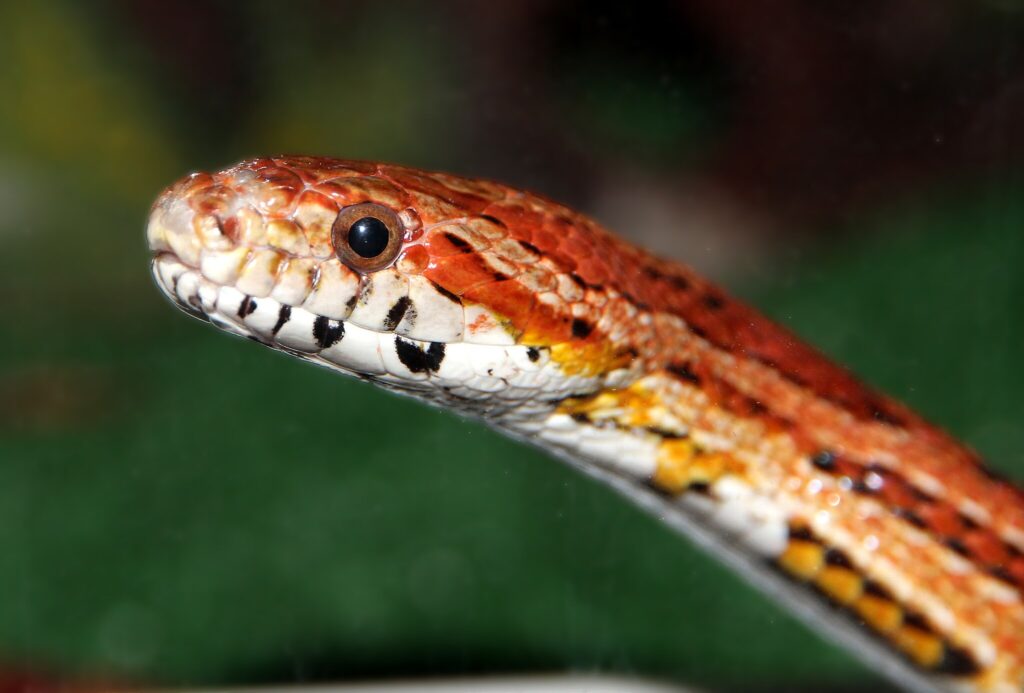
Far from simply mating opportunistically, corn snakes engage in elaborate courtship rituals that involve multiple sensory systems and behavioral displays. Male corn snakes track receptive females using specialized scent receptors in their forked tongues, which sample airborne pheromones and deliver them to the vomeronasal organ in the roof of the mouth. Once a potential mate is located, males initiate courtship by aligning their bodies with the female and performing rhythmic, wave-like muscle contractions that ripple along their length. These sophisticated courtship interactions can last for hours, with males often competing and females actively choosing partners based on size, condition, and persistence. During breeding season in captivity, keepers often observe males refusing food and becoming more active as they search for mates, demonstrating how powerful these reproductive drives can be even in domestic settings.
They’ve Been Bred into Hundreds of Color Morphs

Corn snakes have undergone one of the most extensive selective breeding programs of any reptile species, resulting in an astonishing array of color variations and pattern mutations that number in the hundreds. From the stark white “snow” morphs to the vibrant “candy cane” varieties with bold red and white banding, breeders have developed corn snakes bearing little resemblance to their wild counterparts. Some dramatic mutations include the “scaleless” corn snakes with reduced scales, the hypomelanistic “lavender” morphs with purplish hues, and the striped “motley” variants with altered pattern expressions. The genetic combinations are now so complex that some specialist breeders focus exclusively on specific genetic lines or colorations. While these selectively bred snakes retain the same care requirements and temperament as their wild-type relatives, their appearance showcases the remarkable genetic plasticity within the species and the dedication of hobbyist breeders over many decades.
They Have Built-in Tools for Cracking Eggs

Corn snakes possess a specialized anatomical adaptation specifically evolved for consuming eggs, one of their favorite natural food sources. Within their spine, approximately 25-30 vertebrae back from their head, they have modified vertebral processes called hypapophyses that project downward into their esophagus. These bony projections function essentially as built-in egg-cracking tools, puncturing eggshells after the snake has swallowed an egg whole. This remarkable adaptation allows them to consume the nutritious contents while later regurgitating the crushed, empty shell. Wild corn snakes regularly raid bird nests, capable of consuming eggs surprisingly large relative to their head size by dislocating their jaws and stretching their skin and internal tissues. This egg-specialist adaptation highlights their ecological role as nest predators and demonstrates nature’s remarkable specialization even within generalist predators.
They Use Constriction With Mathematical Precision
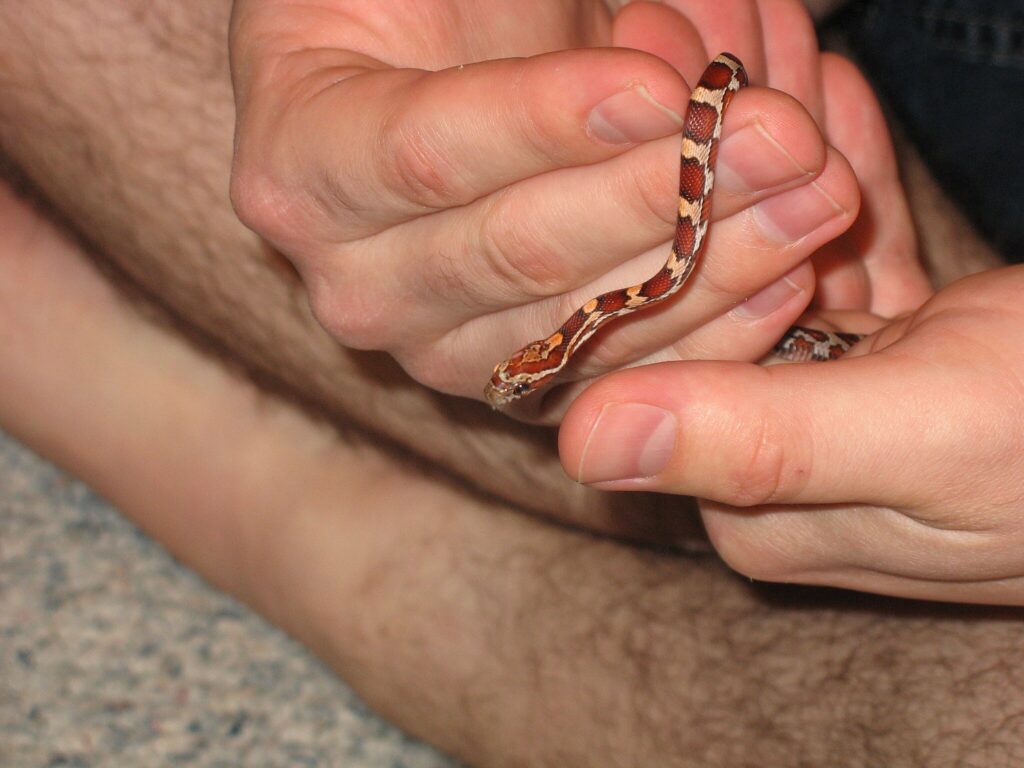
Corn snakes employ constriction not as a means to crush or suffocate prey as commonly believed, but with remarkable physiological precision to stop blood flow to the prey’s vital organs. Research has revealed that these constrictors apply pressure with mathematical consistency, adjusting their coiling force to target the specific blood pressure threshold of their prey, effectively causing circulatory arrest within seconds. This precision killing method is remarkably efficient, as corn snakes can detect the heartbeat of their prey through direct contact and know exactly when to release their coils once the heart stops. The snake continuously adjusts tension throughout the constriction process, tightening further when the prey exhales to prevent re-expansion of the lungs and circulatory recovery. This sophisticated hunting strategy showcases the biological sophistication of these seemingly simple predators and the evolutionary refinement of their hunting techniques over millions of years.
They’re Immune to Rat Venom
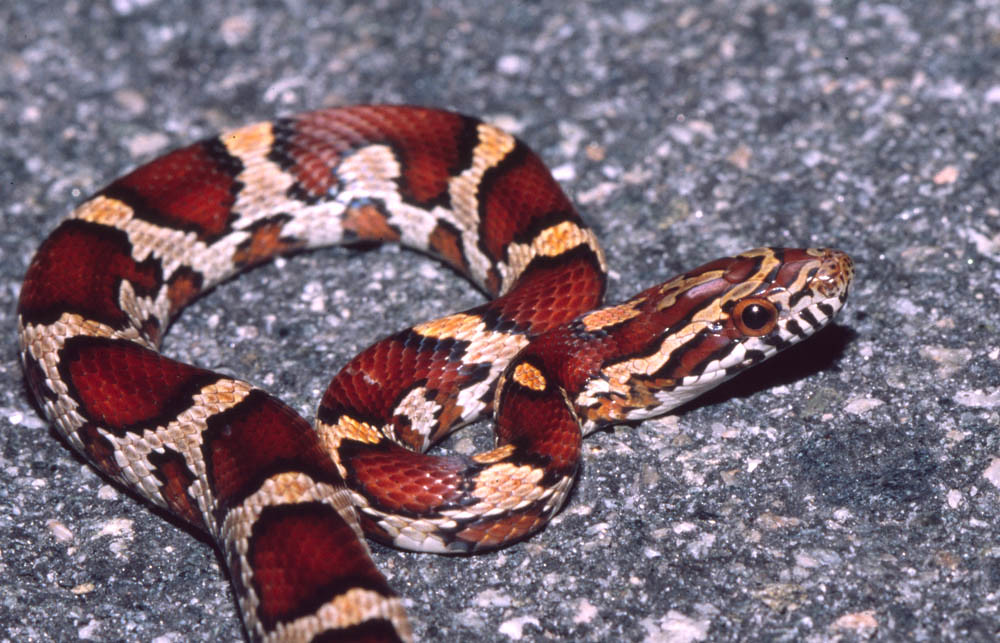
In a fascinating evolutionary adaptation, corn snakes have developed a natural immunity to certain toxins found in the saliva of their common prey, particularly rats and mice. Rodents have evolved defensive compounds in their saliva that can be harmful or even deadly to many predators, but corn snakes possess specialized proteins in their bloodstream that neutralize these toxins. This biological defense mechanism allows corn snakes to safely consume rodents that might otherwise deliver painful or injurious bites during the capture and swallowing process. Their immunity represents an example of an evolutionary arms race between predator and prey, where each species continuously adapts to counter the defenses of the other. This natural resistance to rodent toxins contributes significantly to the corn snake’s success as a specialized rodent predator across its native range in North America.
They’re Often Mistaken for Venomous Copperheads
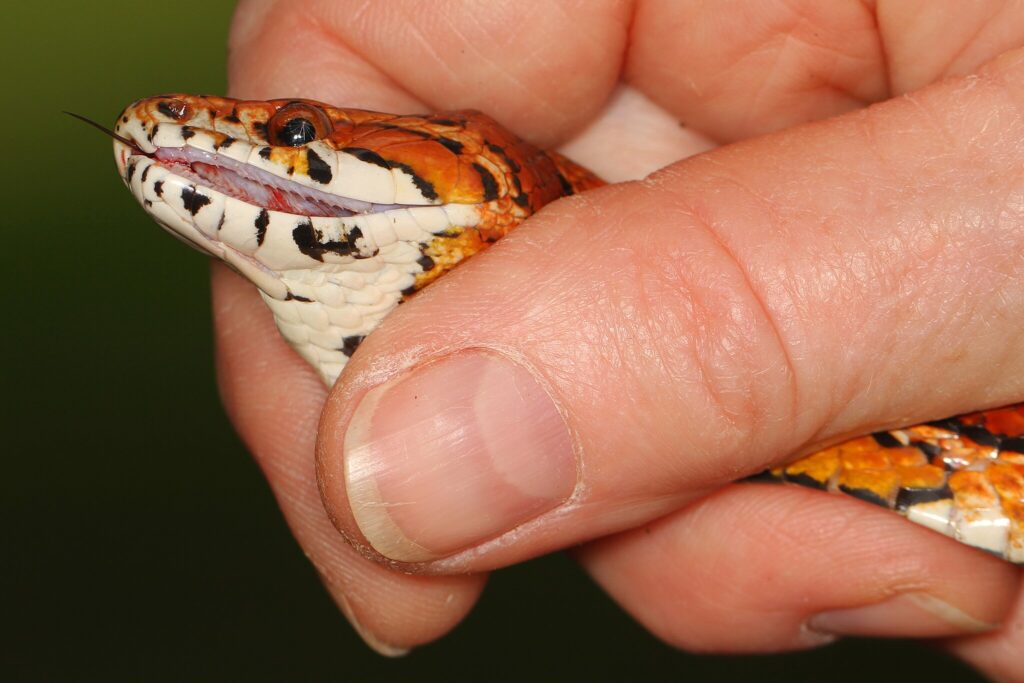
Despite being completely harmless to humans, corn snakes are frequently misidentified as venomous copperheads and killed due to unfortunate visual similarities in their coloration and patterning. Both species display reddish-orange to brownish base colors with darker saddle-like markings, leading to the folk expression “red touch yellow, kill a fellow; red touch black, friend of Jack” (though this rhyme actually refers to coral snakes, not copperheads). Key identification differences include the corn snake’s more slender build, round pupils, and saddle markings that are clearly defined and typically outlined in black, contrasting with the copperhead’s thicker body, vertical pupils, and hourglass-shaped markings that extend across the sides. Conservation efforts increasingly focus on public education to reduce these cases of mistaken identity, as corn snakes play valuable roles in controlling rodent populations and maintaining ecological balance in their native habitats.
They Can Regenerate Parts of Their Tails
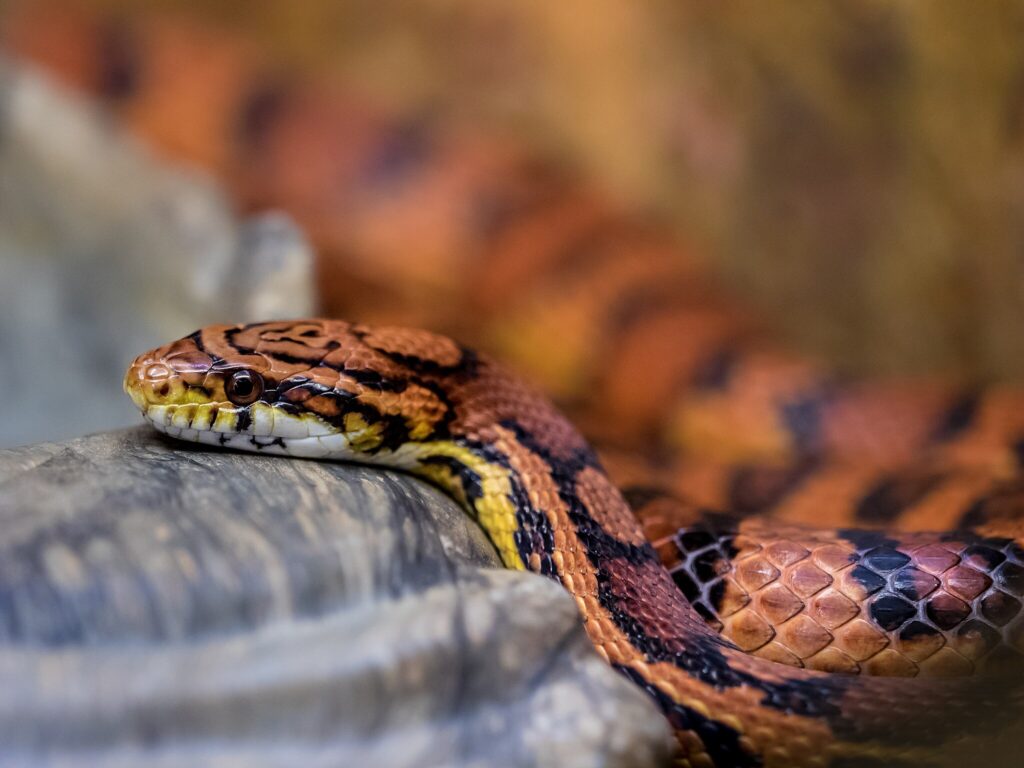
Corn snakes possess a remarkable ability to partially regenerate their tails if the original is damaged or lost to predator attacks, though with notable limitations compared to some lizard species. When a corn snake loses a portion of its tail, specialized cells near the injury site activate and begin creating new tissue that forms a replacement tip. This regenerated section lacks the complex vertebral structure of the original tail, instead containing a cartilaginous rod surrounded by muscle and covered with scales that may differ slightly in appearance from the original pattern. The regenerative capacity serves as a vital survival adaptation, as many predators target snake tails, allowing the corn snake to sacrifice this non-vital portion to escape. While the replacement tail will never fully match the original in function or appearance, this ability demonstrates the corn snake’s evolutionary investment in survival strategies and tissue regeneration capabilities.
They’re Among The Most Docile Wild Snake Species
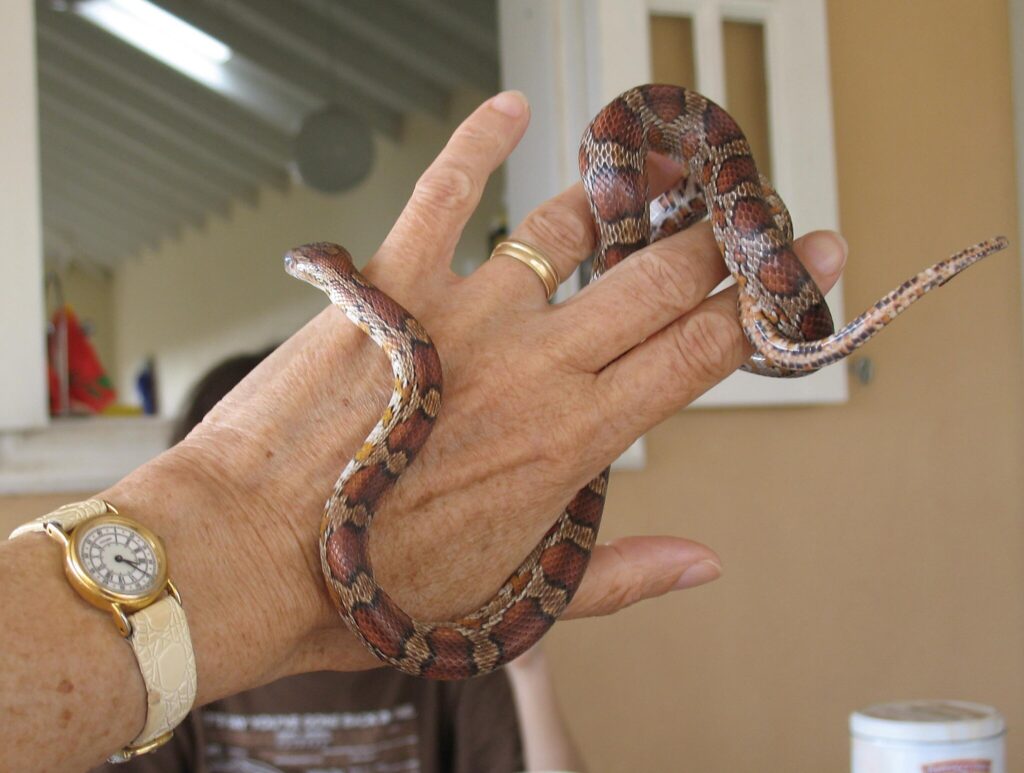
Corn snakes have earned their reputation as one of the most naturally docile snake species, displaying remarkably low aggression even in wild specimens. Unlike many snake species that default to defensive behaviors when encountered, wild corn snakes typically attempt to flee rather than strike when confronted by humans. This inherent temperamental gentleness has made them exceptional candidates for captive breeding programs and contributed significantly to their popularity as pets. Their calm disposition stems partly from their evolutionary strategy as stealthy hunters that rely on camouflage rather than aggression for survival. Even newly captured wild specimens often acclimate quickly to handling, distinguishing them from many other colubrid snakes that remain defensive despite extended captivity. This natural docility, combined with their manageable size and simple care requirements, explains why corn snakes remain the recommended “gateway” species for those entering the world of reptile keeping.
Corn snakes continue to fascinate both herpetology enthusiasts and casual observers with their remarkable adaptations and behaviors. From their specialized hunting techniques to their surprising sensory capabilities, these snakes exemplify evolutionary success through specialization. Whether appreciated as efficient pest controllers in agricultural settings, valued as educational ambassador animals, or cherished as family pets, corn snakes deserve recognition beyond their decorative patterns. Their complex behaviors, remarkable adaptations, and generally gentle nature make them truly exceptional among reptiles. As we better understand these fascinating creatures, we gain not only greater appreciation for corn snakes specifically but deeper insight into the remarkable diversity and specialization within the reptile world as a whole.


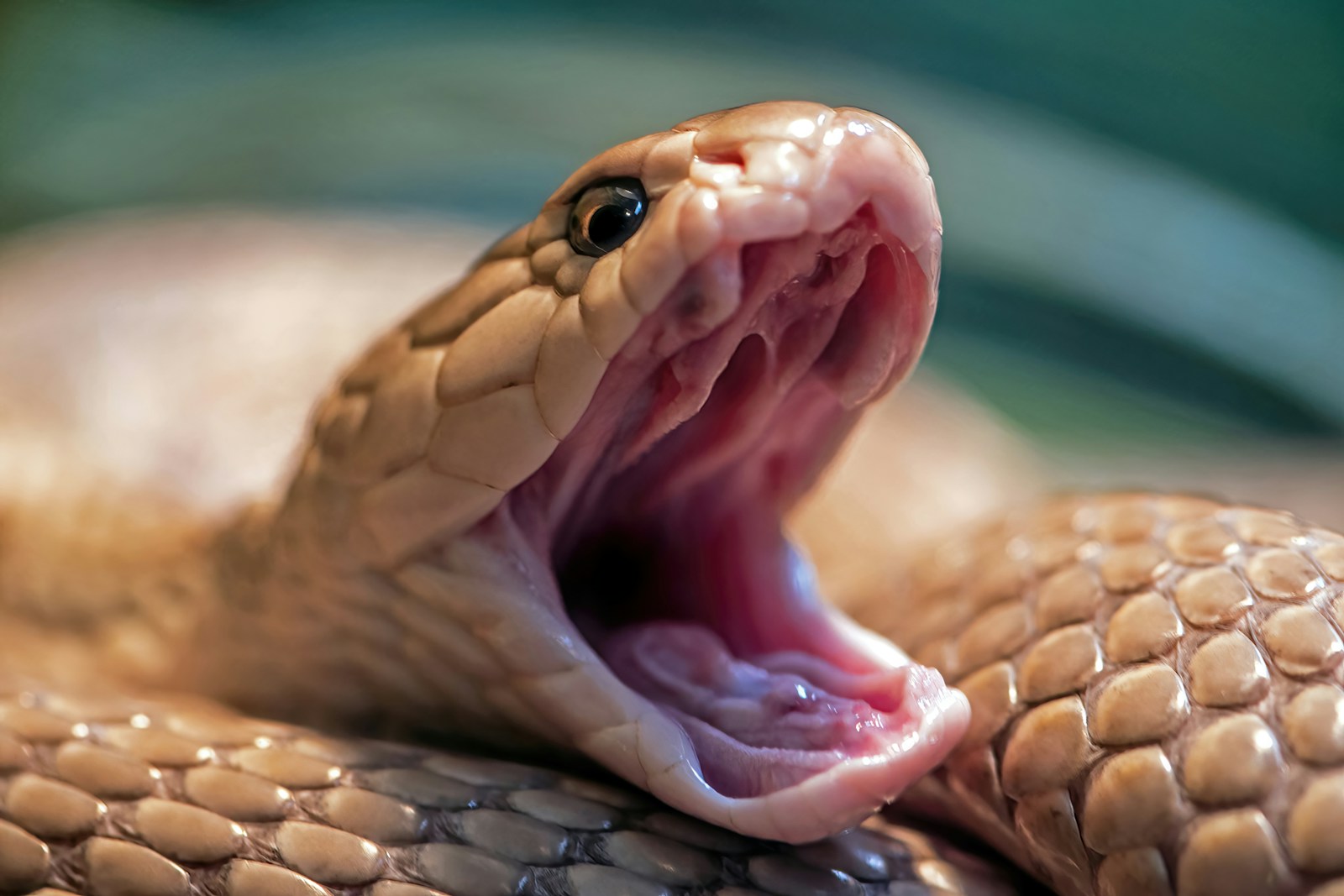



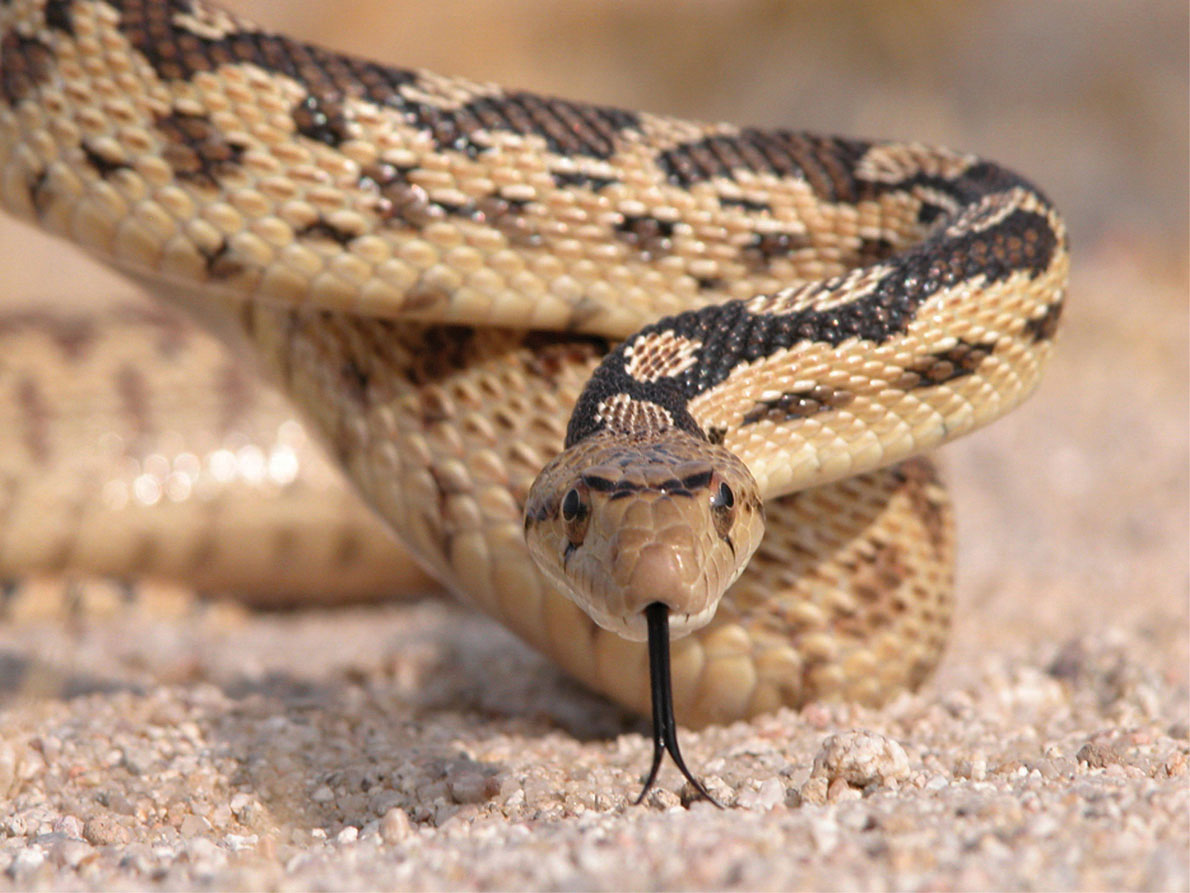


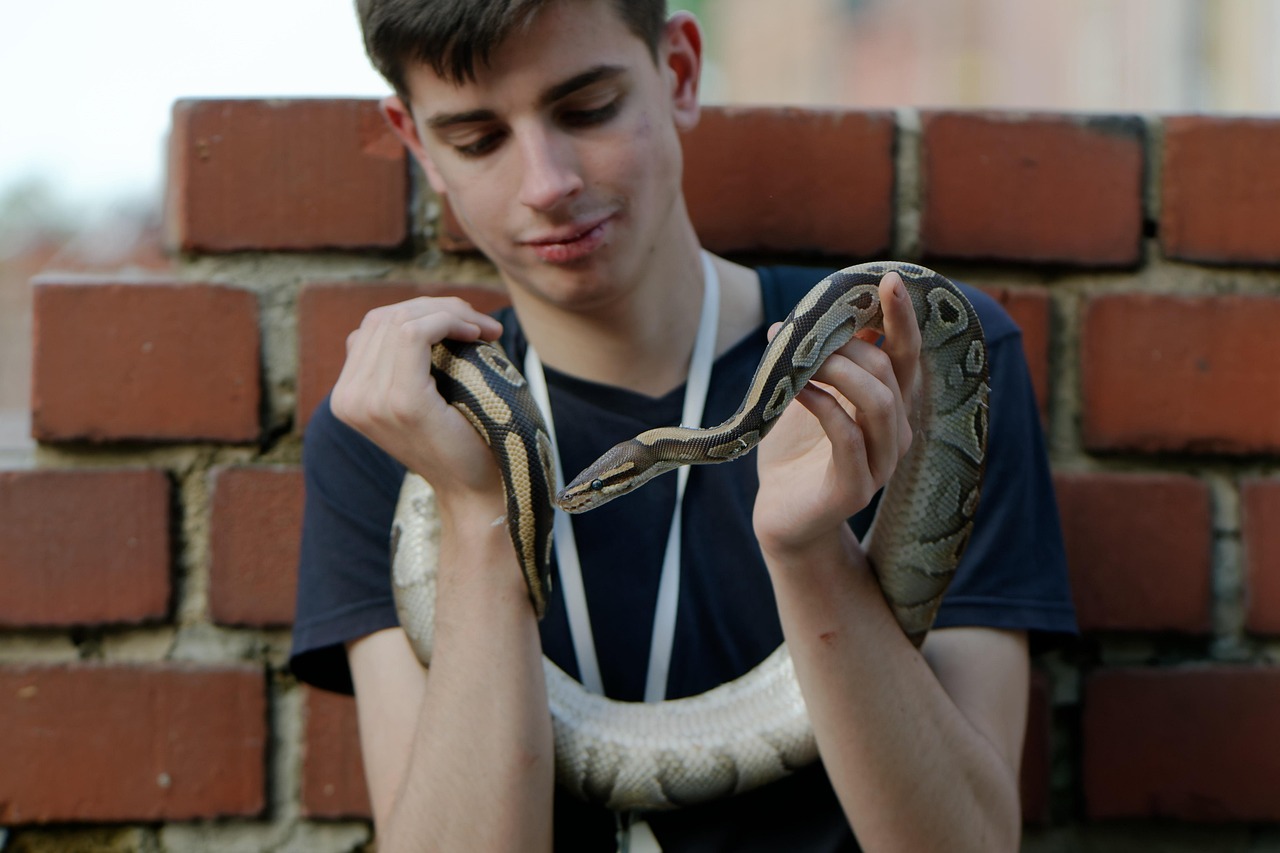
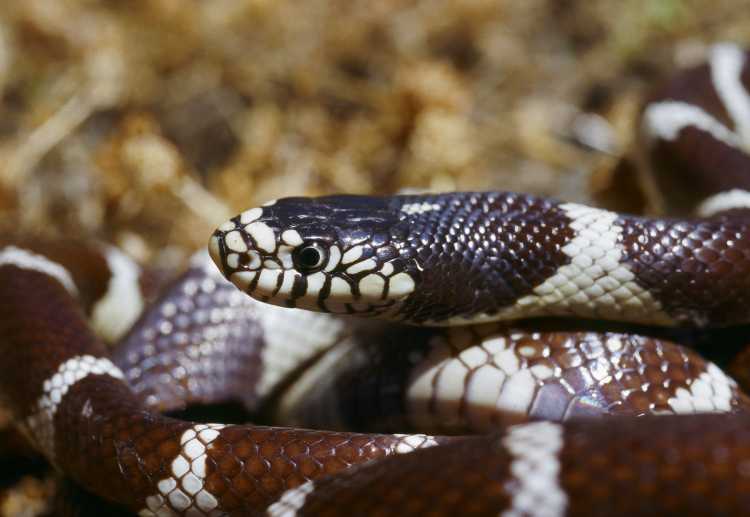
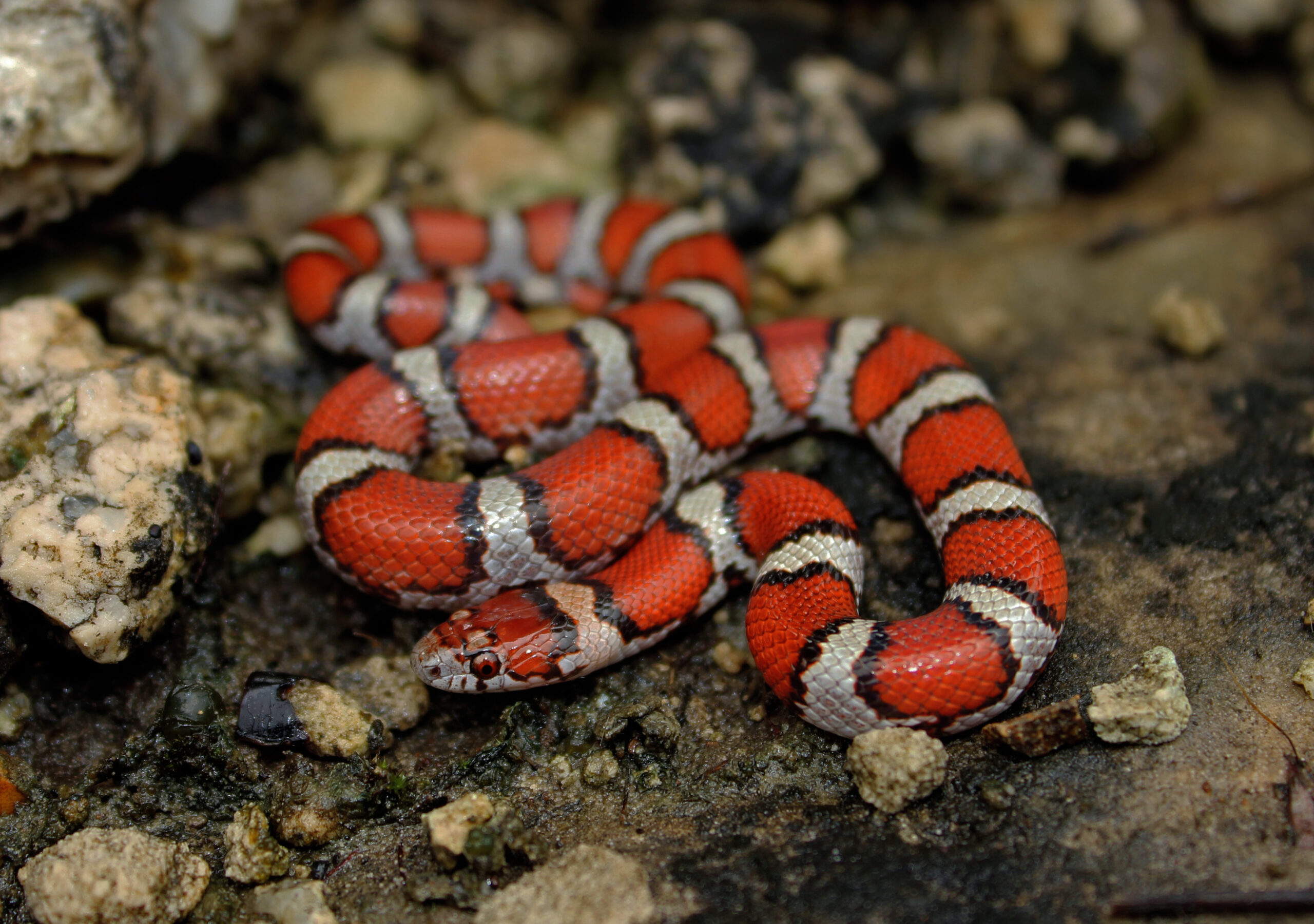




Leave a Reply